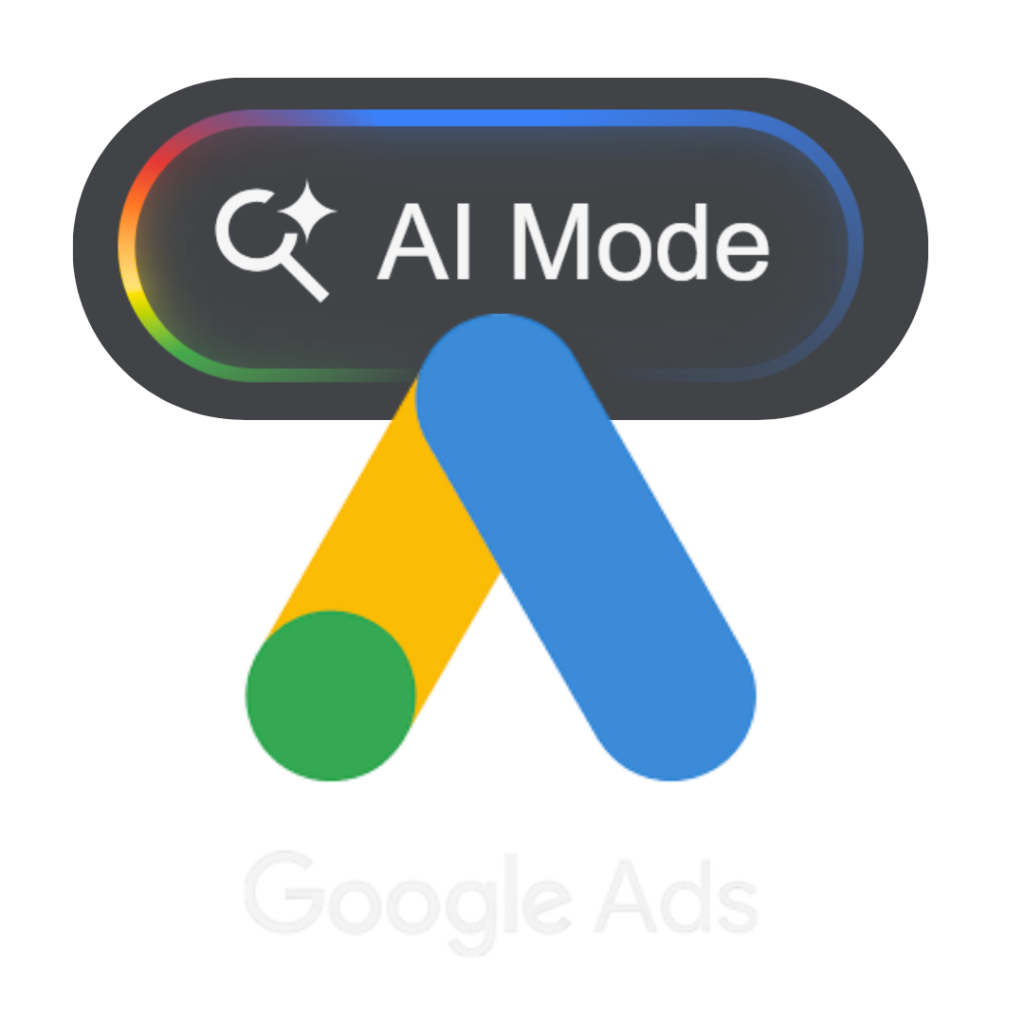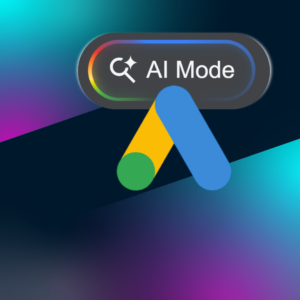Google AI Mode Ads UK Launch 2025: How Brands and Advertisers should prepare for the Paid-Organic Power Play
Contents
-
- How is SEO changing with the introduction of AI Mode?
-
- Google’s AI Mode Roll-out in the UK vs US: Key Timelines
-
- What are Google AI Mode Ads?
-
- Why Is Google Fast-Tracking the Deployment of New Ads Inventory?
-
- How UK Brands Should Prepare for Google AI Mode Ads: Priority Checklist
-
- Potential Risks for Google AI Mode and What to Watch Out For
-
- What We’re Telling Clients Right Now
How is SEO changing with the introduction of AI Mode?
Simply put, Google is rebuilding Search around AI chat. More than 100 million people are already using AI Mode, and the ad switch is flipping just in time for the holiday rush. That means our single-word keywords are giving way to full-blown conversations with AI.
What’s changed? Context. Everything the user has asked so far is going to become the new targeting goldmine.
Google’s AI Mode Ads Roll-out in the UK vs US: Key Timelines
| Milestone | United States | United Kingdom |
| Public launch of AI Mode | 20 May 2025 | 28 Jul 2025 |
| Ads inside AI Mode | Live tests since May; broad roll-out “before Q4” 2025 | Still offline as of August; expected once US data lands in Q4, late 2025 |
| Regulatory climate | DOJ antitrust trial hangs over search | CMA decision on “Strategic Market Status” due 22 Oct 2025 |
This means that now is the perfect time to experiment with organic content and how search queries affect AI Mode results. Anything you can learn now, will vastly improve your ability to effectively deploy ads once paid inventory finally opens towards the end of 2025.
What Are Google AI Mode Ads?
Google’s AI Mode is a full-screen chat interface baked into Search. Instead of typing a short query and scanning blue links on the SERPs, people hold a back-and-forth conversation with the AI to find accurate, informative answers.
Until now, that chat has been ad-free. However, Google is looking to change that in Q4 2025 by weaving AI Mode Ads directly into the dialogue. Here’s how it will look and feel:
-
- Native placement, not banners. Ads appear as extra messages inside the chat clearly labelled, but part of the flow so users don’t leave the conversation.
-
- Context over keywords. The system reads the entire chat history, then surfaces an ad that fits the moment.
-
- Familiar formats, new trigger. Text and product-listing styles stay the same; but what’s new is the timing and relevance. Existing Performance Max campaigns will be automatically eligible for placement within AI Mode.
-
- Measured in sessions, not clicks. Because users may act later bookmarking, revisiting, or buying after another chat Google will push “value-per-session” metrics alongside traditional click-through rates.
Think of it as Google’s answer to ChatGPT-style shopping advice. Keeping visitors inside the Google ecosystem, serving them helpful ads at the right conversational beat, and collecting richer intent data along the way.
Why Is Google Fast-Tracking the Deployment of New Ads Inventory?
Google’s sales still hugely depend on search ads, but a range of factors are beginning to squeeze that income and Google needs to work quickly to keep revenue flowing in:
-
- People are clicking fewer links
When SERPs already shows a direct answer to queries around weather, sports scores, and now an AI summaries are provided, users are far less likely to leave Google. However, fewer clicks mean fewer chances to show classic ads. Therefore, putting paid messages inside the AI chat keeps those advertising dollars flowing without sending users elsewhere.
- People are clicking fewer links
-
- Rivals are teaching us to search differently
ChatGPT, Microsoft’s Copilot in Bing, and even Amazon’s voice tools are training people to ask questions in plain language, producing conversational replies. If Google lets that habit form on a competitor’s platform, it risks losing both users and ad budgets. Moving quickly makes Google the place where those new habits are likely to root first.
- Rivals are teaching us to search differently
-
- Q4 is the retail sector’s “World Cup”
November and December account for up to 30% of many retailers’ annual sales. If Google can prove that conversation-based ads boost holiday performance, it will win early case studies and increase the likelihood of retaining advertiser adoption. With the aim of setting themselves up for a flood of budgets ahead of 2026.
- Q4 is the retail sector’s “World Cup”
- Increased usage of AI means better training data for Google
Each AI reply will help Google understand how people’s searches and questions are changing. Launching ads alongside the AI Mode product will give Google another string to their bow: new revenue streams today and richer data to improve tomorrow’s model.
Put simply, Google is racing to protect its main income stream, stay ahead of new competitors, and lock in user habits before the biggest shopping season of the year in Q4. That urgency explains why AI Mode is rolling out now rather than waiting for every policy and product detail to be perfect.
How UK Brands Should Prepare for Google AI Mode Ads: Priority Checklist
| Priority | Why It Matters | What To Action in 2025 | Category |
Clean Data Feeds |
AI search tools (Google’s SGE and Bing Copilot) pull information directly from your product or service feed. If this data is incomplete, messy, or out of date, users may see incorrect or unattractive results. | Audit and clean all structured data feeds. Ensure titles are clear, no typos, and all fields are complete. Add helpful extras like delivery times, sustainability tags, and service availability. | SEO |
Write Content for Conversations |
AI-driven search and advertising is now triggered based on the topics and intent of the user, not just keywords. That means your content and ads need to anticipate user questions and the intent behind them. | Rewrite ad copy and landing pages to answer natural follow-up questions. Such as “Is this right for me?” or “How does it compare?” Use short FAQs, comparison tables, or visual explainers to help with legibility. | Content / Paid Media |
Track Chat Journeys |
AI search experiences often skip your site entirely, or delay conversions so traditional tracking misses key touchpoints. |
Set up server-side tracking to better attribute conversions (this can be actioned through SGTM). Consider modelling multi-step user journeys that span multiple sessions and channels. | Analytics / Attribution |
Flexible Budgeting |
AI-generated ad placements and formats are still evolving, and performance can vary. You need budget room to test without risking core campaigns. | At Arke we would recommend ringfencing 10-15% of your paid search budget for AI-based formats (e.g. Search Generative Experience ads). Monitor weekly and reallocate funds based on ROI. | Paid Media / Budgeting |
Potential Risks for Google AI Mode and What to Watch Out For
Regulatory brakes
The UK Competition and Markets Authority could soon label Google “strategically significant,” unlocking powers to demand clearer ad labels or even pause new formats. A decision like that could push back or delay the UK launch, so we’d suggest building wiggle room into your Q4 timeline.
Publisher push-back
When Google’s chat answers a query outright, news sites and blogs lose clicks and they will understandably lobby hard for changes. Google has adjusted its page layouts before under similar pressure, so your ad real estate could shrink or shift with little notice. Keep creative and budget plans flexible.
Difficult measurement
Chat users rarely follow a neat click-and-buy path, making sales attribution difficult. Teams with solid first-party data pipelines will see the real performance faster; those relying solely on Google’s reporting will be stuck guessing. Shore up your data where you’re able to now, to avoid flying blind during the rollout.
What We’re Telling Clients Right Now
We’ve got roughly twelve weeks before Q4 kicks off for 2025. Here’s how Arke are approaching it and what we recommend:
-
- Experiment early while bids are cheap.
-
- Treat AI Mode as upper and mid-funnel. Optimise for engagement assists, not just last-click wins.
-
- Fight for creative resources. Narrative-led assets outperform price-led blurbs inside chat.
-
- Keep your clients up to date with changes and manage expectations.
Keyword bidding still matters, but the search game is getting much bigger and increasing in complexity. Conversation-led journeys are opening fresh lanes for creativity and growth for advertisers and brands alike, and the first adopters that test, learn, and adapt will set the pace for everyone else.
Do get in touch with us if you want to talk more about AI Mode Ads, we’ll be happy to help!

Ollie Sloan
Head of Strategy






